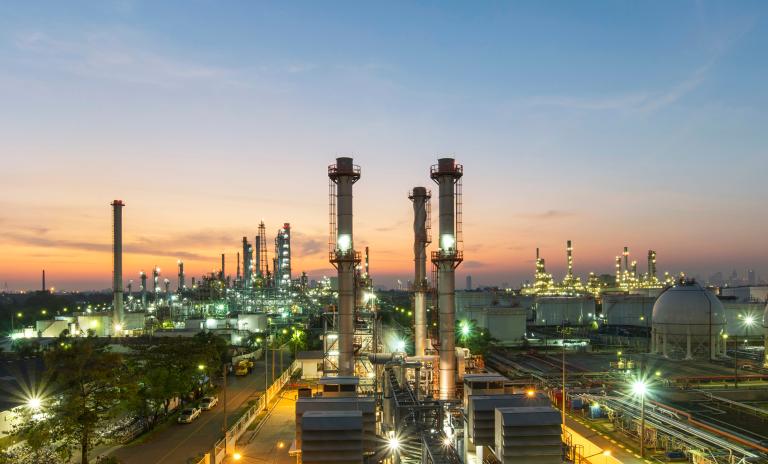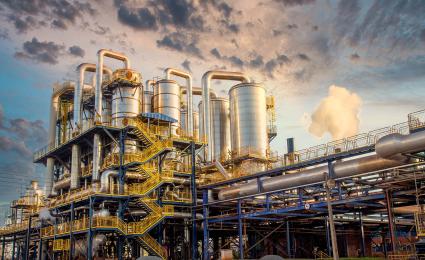The chemical industry needs a more circular approach to embedded carbon. This requires new solutions to technological, economic, and infrastructural hurdles.


Closer to home: The six questions every chemical manufacturer must answer to nearshore successfully
By Sid Malhotra, Peter Odenwälder and Ivy Sun
Chemical manufacturers are increasingly feeling the pressure to bring their supply chains and production closer to home.
With mounting pressures from global disruptions, regulatory shifts, and the need for greater resilience, nearshoring is becoming an urgent priority. To navigate this transition successfully, please take a look at these six important questions to guide your strategy and ensure a smooth, effective shift.

After several decades in which the name of the game in chemicals was to seek out the lowest-cost suppliers wherever they could be found, corporate strategists have realized that this approach only makes sense in a lower-volatility and more globally connected world than the one in which we now live.
Unexpected surges in demand during the pandemic, for example, exposed the fragility of many extended supply chains. In addition, tariffs, extreme weather, piracy, the Russia-Ukraine war and other unexpected events have led to a radical rethinking of the best way of running a global supply network. Today, most procurement strategists are looking for ways to make their supply lines shorter, more responsive, and more resilient.
Supply chain localization offers an opportunity to reduce production risk while improving reliability, material availability stabilizing costs, and possibly even reducing the company’s carbon footprint. Moreover, many customers are demanding shorter supply chains and lower inventory levels, partly in order to secure more reliable and cleaner production and partly in response to positive consumer attitudes toward locally made products.
Rebuilding the network
Conceptually, the idea is simple. In fact, reeling in a global supply chain that took decades to build won’t be easy. Globally, most companies will need between five and ten years to make the transition.
There is a lot to be done. Besides building new infrastructure for manufacturing warehouses, and storage closer to their end markets, companies will need to strengthen their local logistics and transportation partnerships. This move may be especially challenging for companies that previously exported their products to other regions. These global commodity chemical makers could risk losing their current share in foreign markets – and depending on the country, maybe even basic market access.
How quickly this transition happens depends in part on the nature of the products in question. Depending on where the company wants to relocate, it may face serious headwinds as it replaces its suppliers. North America, for instance, has advantages in natural gas, tallow, and lumber, while the Middle East has advantages in crude oil and Southeast Asia and South America have a labor cost advantage. Matching production costs and meeting client specifications while missing some of those old advantages may not be easy.
In some cases, innovation will be needed. Sulphuric acid, for instance, is not easy to find in some regions, while North America dominates the market for Chitosan, a bio-based water treatment chemical. Graphite rods for electric batteries can at present only be made in China, and it will take between a year and 18 months for the west to develop its own version.
Fortunately, it’s not all headwinds ahead. There are political tailwinds to be enjoyed as well, including the US Inflation Reduction Act, the CHIPS Act, and Department of Energy funding; in Europe, the European Chips Act; and in China state funds such as the China Integrated Circuit Industry Investment Fund.
Six questions to ask about your production road map
Such sweeping change must be bold but not hasty. Here are the six questions you should ask first about your production road map, and how we have helped our clients address each of them:
- 1. Do we qualify for incentives? See what local, state, and federal subsidies you can take advantage of now. Government leaders have short attention spans as a rule: it’s critical to move quickly, in case policymakers’ priorities change.
We supported a specialty chemicals client understand the option set and viability for a major USD 500 m capital project to build a facility focused on sustainable / circular integration that co-located material production with carbon capture / methanol production. Additionally, we helped draft proposals to help our client qualify for US Inflation Reduction Act funding to support the project.
- 2. What do we need to do to stay customer-centric? Market priorities are changing today, and organizational structures need to keep up:
We changed the structure of the customer facing organization at a global water chemicals supplier, transforming roles and responsibilities at the global and regional levels (e.g., Key Account Managers, Regional Account Managers, and Indirect Sales, Technical Service Engineers,). This has allowed the organization to be nimbler in responding to changing customer needs across the world.
- 3. What does our supply chain look like? Identify your critical direct and indirect suppliers and support the build-out of their local network capabilities. You will want to guard against single points of failure too, looking for multiple sourcing options whenever possible, to ensure that you don’t build a supply chain closer to home that still leaves you vulnerable.
For a private equity portfolio chemical based in Europe, we evaluated the regional manufacturing cost structure and developed a holistic localized supply chain. This made it possible to significantly shift import and export ratios of key raw materials to neutralize some negative EBITDA margins.
- 4. How long will it take before we can meet our sourcing and production needs locally? Depending on where you are located, you may need to expand your nearshore production enough to meet your local demand. It’s important to understand how long it will be before your new nearshore sources ramp up because you will need to preserve your current relationships active until then.
For a private equity owned global mineral salts company, we developed a localized manufacturing and production strategy to minimize long supply chains, maximize local government contract wins, and support the setup of protective import tariffs that were protecting state-owned entities.
- 5. Will we be compliant? Ensure you will be able to comply with your regulatory, sustainability, and circularity demands without sacrificing your timeline and ability to scale.
For an entity owned by a state sovereign wealth fund, we supported the bottom-up development of a large-scale desalination and brine-to-chemicals facility with a focus on sustainability through the valorization of brine and renewable energy consumption.
- 6. Will we have the money to build the facilities we need? The investments required are likely to be quite heavy. Be sure to plan ahead for the CapEx you will need to build new facilities. For most companies, this will necessitate a careful rebalancing of short-term profitability and long-term investment.
We helped a global chemical company navigate a change in global supply/demand balances of a nutraceutical product and deploy an optimized CapEx plan to facilitate significant volume growth at an aging facility. Our focus in the engagement was to validate the commercial growth opportunity, the associated capital investment needs, and the resources of the organization needed to execute these critical plans.
A variety of drivers are pushing chemical companies to bring supply chains closer to their home markets. Despite some governmental subsidies and other advantages, this won’t be an easy transition. Asking the right questions, however, can add momentum that will move you in the right direction.






